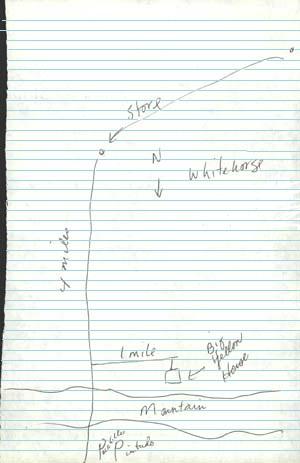Originally published on Celebrating New Mexico Statehood, 8/19/2016
As summer advances toward the solstice in late June, we on the Hillerman team are mentally projecting our bodies out into the terrain that our imaginations roam, thanks to Tony Hillerman. Although a significant portion of Hillerman’s Navajo detective series occurs in urban environments around the U.S., what the novels are best known for is their evocation of Southwest landscapes, landscapes into which he and his wife Marie would disappear whenever he encountered writer’s block. Grabbing Hillerman’s favorite gas station maps and the family car, Tony and Marie would head west into Navajo Country, with or without a specific destination in mind. The country through which they wandered would eventually provide the key that would unlock the problem, plot device, scenario, or character motivation that eluded Hillerman at home as he wrote at his large, roll top desk. Even in his office, maps of the Navajo Reservation and the Four Corners area adorned the walls above his head, with pushpins marking crime scenes, sites of revelation, and the projected routes his characters traversed in the novels they peopled.
Many of Hillerman’s plot devices occur in remote areas that his characters navigate from memory or from beat-up maps pulled in haste from glove boxes as they travel through terrain that includes hardrock scrub country, red rock ravines, and even “doubtful dirt roads.” This last one caught our attention recently, as Officer Jim Chee, in his efforts to solve the mystery of the People of Darkness (1980), searches out a Peyote Way memorial service occurring near Chaco Canyon, about 100 miles northwest of Albuquerque, NM. Chee pulls out an “Indian Country” map “produced by the Auto Club of Southern California” that lists nine categories of road “ranging from Divided Limited Access Highways, down through Gravel, Graded Dirt, and Ungraded Dirt to Doubtful Dirt,” and then supplements it with a map hand-drawn on a lined sheet from a Big Chief notebook. Perhaps it was the alliterative license of “doubtful dirt” marked on the Indian Country map, or the humorous warning given by the twelve-year-old map drawer to be careful because “out there you can get lost,” but Hillerman’s doubtful dirt roads, hand-drawn maps, and the chance to get lost “out there” are the reasons we join Tony, Marie, and Hillerman’s Navajo detectives on their, and our, jaunts.

